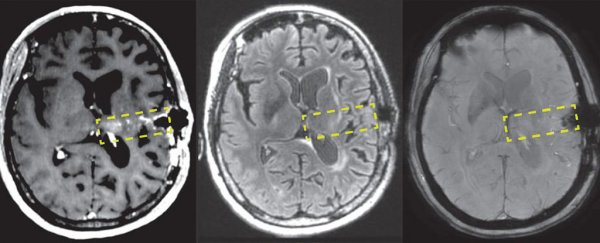The blood-brain barrier (BBB) that guards the outskirts of your brain is designed to protect it against a wide variety of damaging neurotoxins, but there's one problem - it also limits the effectiveness of chemotherapy in targeting tumours inside the brain.
To tackle this, a team in France has used 'microbubbles' to temporarily open the BBB, which allows stronger doses of cancer-fighting drugs to sneak past. If positive results from a recent trial can be replicated, researchers hope to explore applications not just in cancer treatment, but in fighting other brain disorders such as Alzheimer's disease and stroke.
The procedure works by injecting the bloodstream with tiny bubbles of gas wrapped in a natural coating. These microbubbles last for around 4 minutes, but if ultrasound is also applied to a specific area of the brain at the same time, it causes the bubbles to vibrate and open up the blood-brain barrier.
Right now, the treatment is only being tested on a limited number of people: 15 volunteers diagnosed with the brain cancer glioblastoma are involved in the first clinical trial.
Another team using a similar kind of technique made headlines last year, but has not as yet published its research. The procedure has also been shown to be effective in animals.
For the purposes of this trial, the doctors are using an ultrasound device called a SonoCloud implanted inside the skull – which makes the technique more precise – together with the chemotherapy drug carboplatin. The device is switched on for 2 minutes in total as the chemo drug is applied.
The researchers found that the ultrasound vibration makes the BBB 'leaky' for around 6 hours. After a maximum of six treatments a month apart, MRI scans indicated that five times the normal amount of carboplatin had reached the brain because of the microbubble technique.
It's impossible to know how effective this treatment will be long-term, so further research over many years with a broader sample size of patients is needed to fully understand how it works. But it's a really promising start.
"It's a brand-new field, and every month we're discovering new stuff," neurosurgeon Alexandre Carpentier from the Assistance Publique-Hôpitaux de Paris told Jessica Hamzelou at New Scientist. "It's very exciting."
 Credit: Science Translational Medicine
Credit: Science Translational Medicine
Even without the addition of microbubbles, ultrasound alone might be enough to open up new possibilities in tackling brain diseases. Last year, ultrasound was used to successfully improve the memory of mice with Alzheimer's.
"People for years have been trying to open the blood-brain barrier," Neal Kassell, founder of the Focused Ultrasound Foundation, who wasn't involved with the trial, told MIT Technology Review.
The ultimate aim is to have the ability to "repetitively and reversibly open the blood-brain barrier in a non-invasive, targeted, and focused manner", he added. "This is one more step toward that goal."
The findings have been published in Science Translational Medicine.
